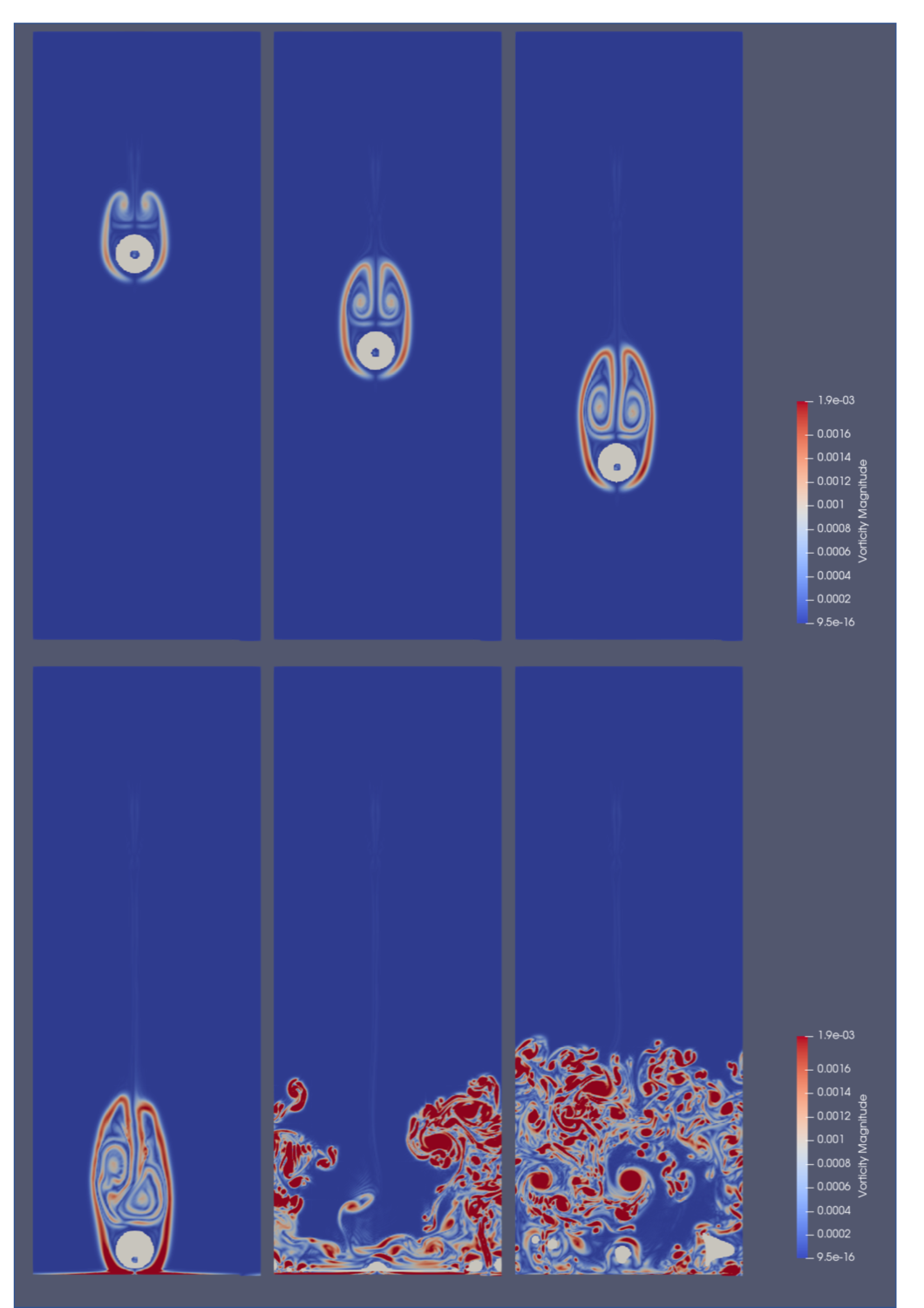Research Summary Report B03
Modelling and Simulation of Shotcrete 3D Printing (SC3DP) Based on a Massively Parallel Multi-Phase, Multi-Component Coupled LBM-DEM Approach
[26.07.2022]
Kutscher, Konstantin; Researcher
Geier, Martin; Project leader
Krafczyk, Manfred; Project leader
all: TU Braunschweig, Institut für rechnergestützte Modellierung im Bauingenieurwesen (IRMB)
B03 goals
The primary aim of the project is to understand and quantify the dynamic distribution of material components (fluid, air and particles) and kinetic energy inside the jet of liquid concrete present in the shotcrete process. The information is required as a basis for future optimization of the process with regards to process and material parameters as well as for the prediction of material inhomogeneities.
Summary
The application of the conservative phase field method to the modeling of droplets in a turbulent environment, as is necessary for the simulation of the shotcrete jet, is challenged by a discontinuity in momentum when an extensive variable formulation is used. Conversely, when using an intensive variable formulation, the method is challenged by a discontinuity in scaled pressure. These discontinuities limit the stability of the simulation to prohibitively short time steps. To overcome this challenge, we are developing a split-distribution lattice Boltzmann method utilizing an intensive formulation for the velocity of the fluid and an extensive formulation for the pressure. To facilitate this splitting, the streaming step of the lattice Boltzmann equation has to be modified. Intensive and extensive quantities are separated into two different distribution functions. This requires a scaling of the extensive distribution function by the density before and after streaming. In single phase regions, where the density is constant, the method becomes equivalent to the usual lattice Boltzmann method. Only at the interface between the liquid phase and the air, where the discontinuities would occur, the modification is effective. In order to obtain at least a second-order accurate approach, the splitting and merging of the distributions after and before the collision have to be carefully designed. Through asymptotic analysis it is possible to determine the parametrization of the method that eliminates a spurious temporal derivative of the the pressure that spoiled the method initially.
Current state of research short
The development of an extensive/intensive split distribution lattice Boltzmann solver for stable simulations at high ratios between the density of the fluid to the air phase was the main contribution in the last period of this project (see Fig. 1). Asymptotic analysis implies the existence of some spurious terms in the pressure update equation which could not yet been fully eliminated such that further development is ongoing. The current state of the method has been presented at the International Conference for Mesoscopic Methods in Science and Engineering 2022.
Another result of the current reporting period was the simulation of a rheometer in order to determine the physical parameters for a Bingham model of concrete. To this end, Lattice Boltzmann simulations of a Bingham fluid with unknown parameters were conducted starting from an initial guess for viscosity and yield stress. Simulation results were compared with measurements conducted by A04 and a black-box secant method was used to iteratively update the parameters until simulation and experiments matched.

Falling droplet with vorticity field simulated with the split distribution LBM. / Credit: IRMB






